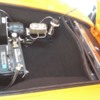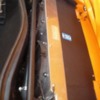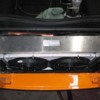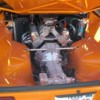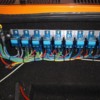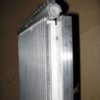quote:
Originally posted by Johnny Woods: I am about to install a single 16" sucker fan on an MG V8 and cant make sense of the Summit racing website. Some of the fans claim to full 3600CFM and only draw 10 amps whereas other fans, also 16" claim to pull 2500CFM and 20 amps. Twice the current draw and a lot less air? Can someone explain this to me.
Could be misleading advertising, not comparing at like test conditions, or different efficiency of fan and motor designs. I wouldn't rely on the Summit advertising. They often provide incomplete or inaccurate information; whatever they think sells. The best way to decide is go directly to the manufacturer's website and see if they have a flow curve that maps current draw to flow for a given static pressure (positive pressure for pushers, negative for suckers). This is usually a few inches of water column pressure. Then compare fan flow/current draw performance at like pressures. This at least will tell the story on the air moving side of the equation.
There are differences in optimal fan/impeller design for positive versus negative pressure use. However, in this pressure range, for axial flow flans, this is usually minimal to negligible and you will usually find the biggest issue for a given impeller design is the fan's proximity to the radiator. As the fan gets closer it can concentrate instead of distribute flow across the heat exchanger (not utilizing all of its cooling area) and also disturbs the efficiency of the fan by artificially imposing higher static pressure drop. Many years ago I designed a lot of air-air systems (ambient air removing heat of compression from compressed air) and the best results were always achieved with sucker fans, a well design plenum/shroud, and fans that were mounted at least the diameter of the impeller away from the heat exchanger. Packaging constraints always required compromise on the latter. The more pressure drop in cooling air flow across the radiator, the less critical the amount of fan space.
So all of this is kind of a windy explanation (sorry) for what common sense and experimentation has taught us; choose the best performing suckers, make a good shroud that is sealed to exposes the entire radiator surface arae and is sealed to the fan inlet, space as far from the radiator as space permits but also in such a way that it does not unduly obstruct and compromise the discharge side of your fans.
On a side note, all of my comments above were in systems that never had any forward velocity. The practical way to address this is the flappers that maximize flow area which you have already addressed (and quite nicely executed I might add). You'll never move more air with your fans than you do at speed as long as you maximize the area for flow across the cooling surface.
quote:
It's interesting what Rodney says about thinner fans drawing more amps, maybe that's the reason? Johnny
The motor design is another design trade. Fan manufactures know for the reasons mentioned above packaging constraints are always an issue. So pancake fans are popular. In the speed and torque range of these fans it can be more difficult to achieve good motor efficiencies with pancake motors, so it may actually be the case that one motor requires more current than another to achieve the same torque, thus air flow. This is why I suggested going to the manufactures website for actual test/performance data.
-Hope that helps.
Best,
Kelly


